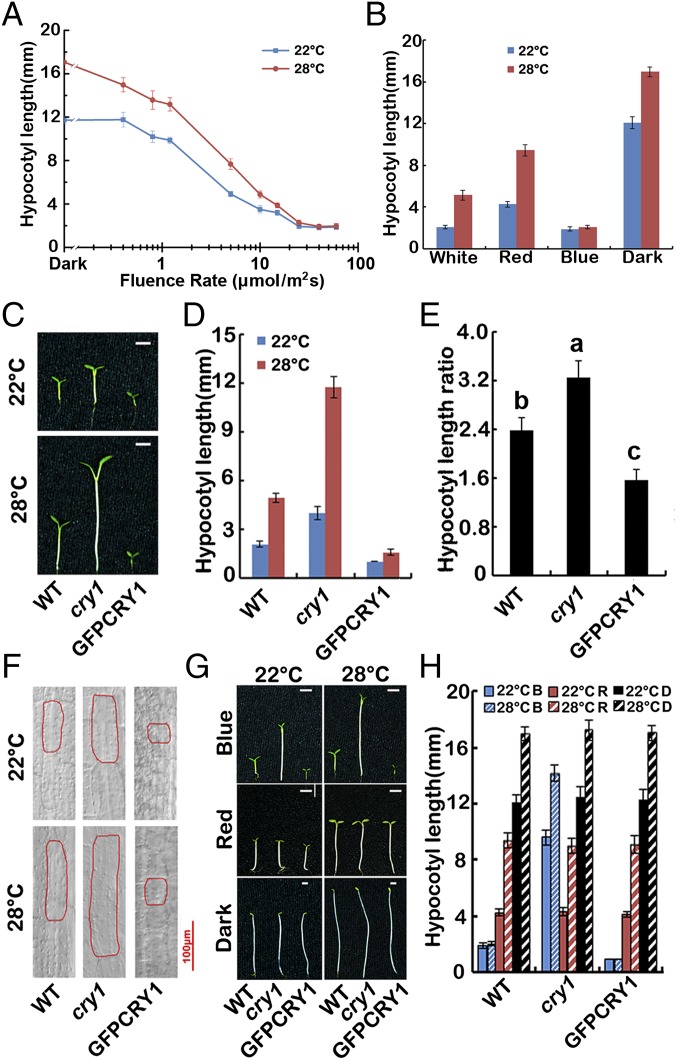Fig. 1.
Blue light inhibits high temperature-induced hypocotyl elongation via CRY1. (A) Fluence rate response curves measuring hypocotyl elongation of 4-d-old WT seedlings grown in continuous blue light at 22 °C and 28 °C. (B) A phenotypic analysis. Seedlings of the wild genotype were grown under continuous white light, red light, blue light (all 40 μmol⋅m−2⋅sec−1) or dark conditions in 22 °C or 28 °C for 4 d. The hypocotyl lengths were measured and are shown. (C–E) A phenotypic analysis. Seedlings of the indicated genotypes were grown under continuous white light at 22 °C or 28 °C for 4 d. Images of the representative seedlings are shown in C, and the hypocotyl lengths of the indicated genotypes were measured and are shown in D. Hypocotyl length ratios (28 °C/22 °C) of the quantified hypocotyl length in D are shown in E. The letters “a” to “c” indicate statistically significant differences between ratios for hypocotyl of the indicated genotypes, as determined by Tukey’s least significant difference (LSD) test (P ≤ 0.01). (F) Cell morphologies of representative seedlings of the indicated genotypes. (G and H) A phenotypic analysis in different light conditions. Seedlings of the indicated genotypes were grown at 22 °C or 28 °C in the dark or continuous blue or red light (40 μmol⋅m−2⋅sec−1) for 4 d. Images of the representative seedlings are shown in G, and the hypocotyl lengths of the indicated genotypes were measured and are shown in H. SDs (n > 15) are indicated.

